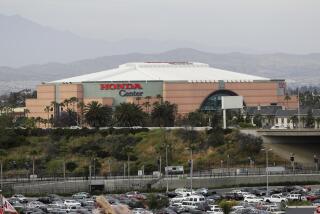Front Seat for Honda Accord
- Share via
Ten years ago the United Auto Workers’ then-president Douglas A. Fraser, arguing for what a year later would become a “temporary” import quota on Japanese cars, proposed that the best way for Japan’s auto makers to participate in the American market would be by building their own plants in the United States, manned by American labor. Within a short time the Japanese began to do just that, with impressive and now even historic results. Last year the Honda Accord emerged as the best-selling car in the United States, the first time a foreign-marque car achieved that distinction. Overall, Honda sold nearly 783,000 cars in the United States, giving it a 7.9% share of the domestic market. About 390,000 of those cars were built in Honda’s Ohio plants.
The report comes shortly after the UAW’s current president, Owen Bieber, called for cuts in Japan’s exports to the United States from 2.3 million cars to 1.5 million, arguing that such a reduction is warranted because Japanese-owned plants in the States now make about 750,000 cars.
This notion that there should be compensatory reductions in imports as domestic output grows has interesting implications, given that before too long Japanese auto makers plan to have a North American production capacity of more than 2 million cars. At that point could we expect to see advocates of protectionism demanding a full cutoff of car imports from Japan, and maybe even a halt to further construction of Japanese auto plants in the United States? We wouldn’t be surprised.
What has gone before is a shameful and costly assault on the interests of American consumers, beginning with the 1981 imposition of auto-import quotas that was supposed to last no more than three years while the U.S. auto industry retooled to meet the challenge of foreign competition. The temporary “breathing space” lobbied for by the industry has lasted through the decade. Now, as if quotas weren’t enough, the suggestion is being raised that Japanese car makers should be prepared to accept a ceiling on the percentage of the American car market they are entitled to have.
The Honda Accord’s place at the head of the 1989 sales parade might encourage further such suggestions. They ought to be rejected for the nonsense they are. In a free economy, market share isn’t something that’s assigned; it’s something to be won in open and fair competition for consumer loyalties. When Honda does well in the U.S. market, or Ford or Toyota or whatever, it’s because consumers like what these companies have to offer. The name of the game, as always, is competition. Last year the Honda Accord just happened to compete a little better. For 1990 the field is wide open.






